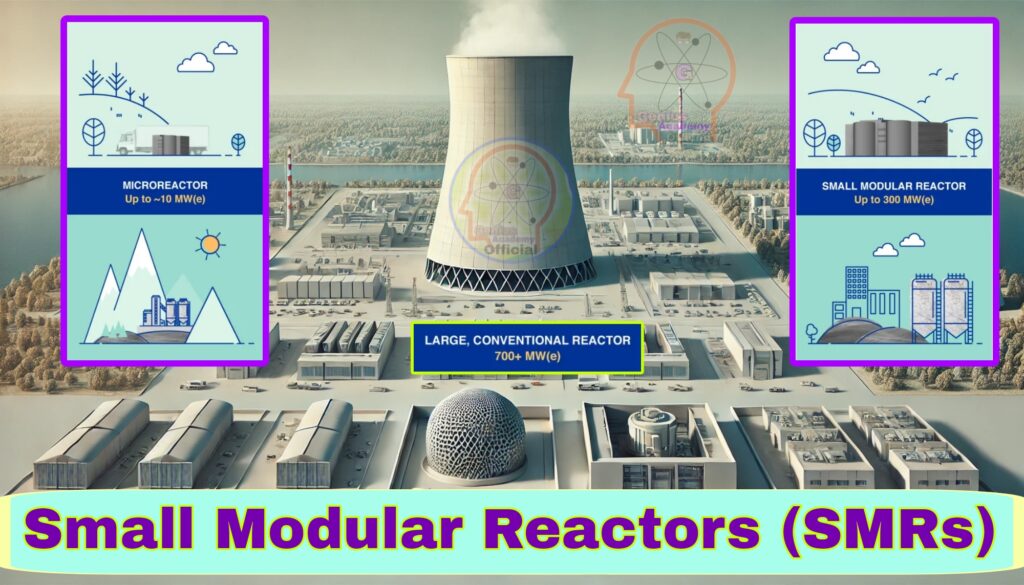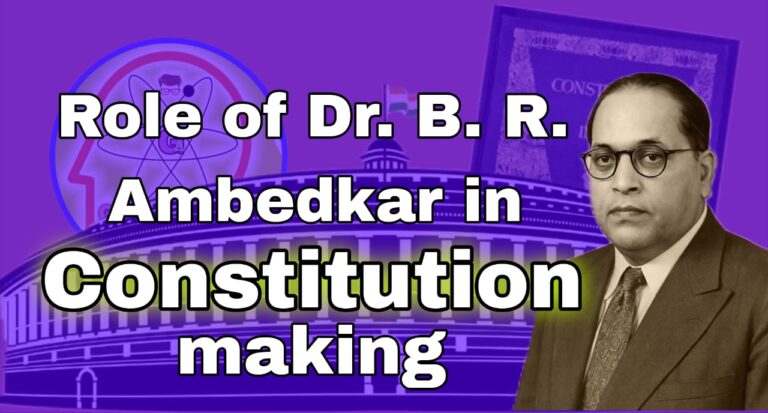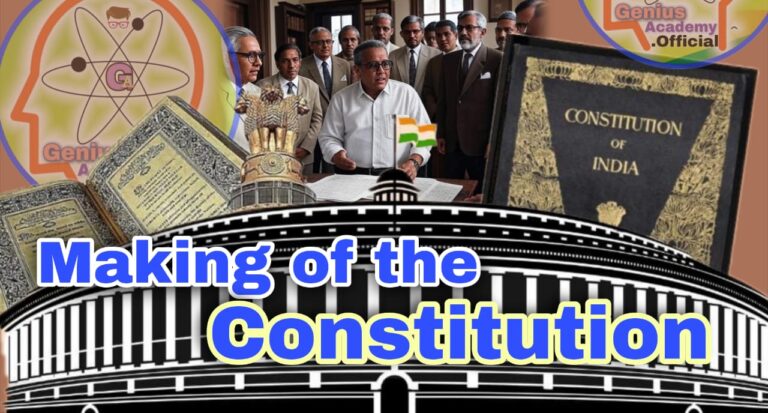Small Modular Reactors: Paving India’s Path to Clean Energy

Context: The Shift Towards Low-Carbon Energy Solutions
In the global drive to reduce carbon emissions and mitigate climate change, India is exploring a broad spectrum of energy solutions. One such transformative step is its focus on Small Modular Reactors (SMRs). These reactors represent a strategic move that aligns well with India’s vision for sustainable energy security, contributing to decarbonization and reducing dependence on fossil fuels.
Understanding Small Modular Reactors (SMRs)
Small Modular Reactors (SMRs) are an innovative type of nuclear reactor designed to be compact and modular, making them distinct from conventional, large-scale nuclear power plants. The defining characteristics of SMRs include:
- Small Size: Small Modular Reactors (SMRs) typically have a generating capacity of up to 300 megawatts (MW), which is about one-third of traditional nuclear reactors. This smaller scale allows for more precise control and safer operation.
- Modular Design: The components and systems of SMRs can be factory-assembled and transported to their designated sites. This feature greatly reduces on-site construction time and cost.
- Nuclear Reactors: Like traditional nuclear reactors, SMRs harness nuclear fission to produce heat, which is then used to generate electricity.
By virtue of their compact and modular nature, SMRs offer unique advantages that cater to modern energy challenges, especially those related to grid integration, land acquisition, and energy security.
Potential Applications of SMRs
- Repurposing Retiring Coal-Based Thermal Power Stations: SMRs can be installed at decommissioned coal power plants, leveraging existing infrastructure and minimizing the need for new land acquisition. This aids in the coal-to-nuclear transition while preserving jobs and reducing community disruptions.
- Complementing Renewable Energy Sources: By providing consistent and reliable baseload power, SMRs can stabilize grids and complement intermittent renewable sources such as solar and wind.
- Rural Electrification and Remote Areas: Due to their smaller footprint, SMRs are well-suited for deployment in remote or underdeveloped regions where large nuclear plants would be impractical.
Advantages of Small Modular Reactors
1. Enhanced Safety Features
- Simplified Design: SMRs have fewer moving parts, reducing the likelihood of malfunctions.
- Inherent Safety Mechanisms: Advanced safety measures, including passive cooling systems, minimize human intervention and make accidents less likely.
- Lower Risk Profile: Smaller reactors are generally easier to control, reducing the risk of catastrophic events.
2. Cost-Effectiveness
- Lower Construction Costs: Factory fabrication reduces on-site construction complexity and costs.
- Reduced Financial Risks: Smaller-scale projects involve less financial investment compared to traditional reactors, making them more attractive for investors.
- Scalability: The modular approach allows incremental capacity additions, aligning investments with energy demand growth.
3. Flexibility and Scalability
- Modular Deployment: SMRs can be deployed gradually, adjusting to changing energy demands.
- Adaptability for Different Uses: They can cater to industrial power needs, remote grids, and even serve military bases due to their compact size.
4. Environmental Benefits and Decarbonization Support
- Low Carbon Emissions: SMRs provide a continuous supply of low-carbon electricity, aiding in the reduction of greenhouse gases.
- Industrial Decarbonization: By supplying clean energy to heavy industries, SMRs can significantly reduce carbon footprints.
5. Utilization of Existing Infrastructure
- Minimized Land Use: SMRs can be installed at sites of decommissioned plants, optimizing land use and repurposing existing infrastructure.
Challenges Facing Small Modular Reactors (SMRs)
1. High Initial Costs
- Significant Capital Investment: The cost of developing new technologies and building SMRs is substantial.
- R&D Expenditures: Continuous research and development are necessary to enhance safety and efficiency, which require large upfront investments.
2. Regulatory Hurdles
- Evolving Frameworks: The regulatory landscape for SMRs is still being developed, leading to delays and uncertainties.
- Balancing Safety and Speed: Streamlining approval processes while ensuring strict safety standards is a complex task for regulators.
3. Proliferation Risks
- Security Concerns: The spread of nuclear materials raises concerns about their potential misuse for military purposes. Ensuring the security of SMRs and preventing proliferation is essential.
4. Nuclear Waste Management
- Long-Term Storage: Though SMRs produce less waste than large reactors, managing and disposing of nuclear waste remains a challenge.
- Environmental Impact: Finding safe, long-term solutions for waste disposal is necessary to minimize ecological risks.
5. Public Perception and Acceptance
- Safety Concerns: Historical nuclear accidents like Chernobyl and Fukushima have led to skepticism regarding nuclear power.
- Trust Building: Educating the public and demonstrating the safety and benefits of SMRs is key to gaining public support.
6. Grid Integration
- Compatibility Issues: SMRs need to be integrated into existing power grids without disrupting supply stability.
- Technological Compatibility: Ensuring that SMRs can effectively work alongside renewables and traditional energy sources is crucial.
7. Supply Chain and Manufacturing
- Component Availability: A robust supply chain is needed to support the mass production and deployment of SMRs.
- Quality Control: Ensuring high manufacturing standards is vital for safety and operational efficiency.
India’s Approach to Small Modular Reactors
Recognizing the potential of SMRs in achieving its energy goals, India has undertaken several initiatives:
1. Strategic Emphasis on SMRs
- India sees SMRs as critical for its transition to a low-carbon economy and achieving net-zero emissions by 2070.
- The NITI Aayog, in collaboration with the Department of Atomic Energy, has been actively promoting SMRs as a key component of industrial decarbonization.
2. Research and Development Initiatives
- Bhabha Atomic Research Centre (BARC): Ongoing research at BARC includes developing the Bharat Small Reactor (BSR), which aims to enhance safety and efficiency by re-engineering existing technologies.
- Deployment Plans: India aims to deploy 40-50 SMRs to replace captive thermal power plants, ensuring reliable, low-carbon electricity.
International Cooperation and Advancements
India’s journey towards adopting Small Modular Reactors (SMRs) is supported by strategic collaborations with other countries:
1. United States
- India and the US are expanding their partnership to develop next-generation SMR technologies, enhancing India’s energy transition and security.
- Key Focus Areas: Joint research, technology sharing, and strategic investments in SMR development.
2. France
- Cooperation Programs: India and France have initiated programs focusing on Small Modular Reactors (SMRs) and Advanced Modular Reactors (AMRs).
- Jules Horowitz Research Reactor: Collaborative efforts in nuclear technology development are ongoing, strengthening India’s capabilities.
3. Russia
- Russian companies have expressed interest in sharing advanced SMR technology, reflecting during Energy Transition Working Group (ETWG) meetings.
- Mutual Benefits: Collaboration focuses on technology transfer, skill development, and energy efficiency.
The Way Forward and Future Prospects
1. Policy and Regulatory Reforms
- Creating a supportive regulatory framework is essential to accelerate the deployment of SMRs. Streamlined licensing, international safety standards, and transparent regulations will build trust and ease adoption.
2. Public-Private Partnerships (PPPs)
- PPPs can foster innovation and mobilize investment for SMR projects. Collaboration between public entities, private industries, and research institutions is key to success.
3. Focus on Public Awareness
- Educating the public about the safety, environmental, and economic benefits of SMRs can foster greater acceptance. Community engagement and transparent communication are vital.
4. Investments in R&D
- Continuous investments in research and innovation will ensure that SMRs remain efficient, safe, and cost-effective.
5. Global Partnerships and Technology Sharing
- Strengthening international partnerships will facilitate technology transfer and knowledge sharing. This can drive advancements, reduce costs, and overcome technological barriers.
Conclusion
India’s emphasis on Small Modular Reactors underscores its commitment to achieving sustainable energy goals. Despite facing challenges related to costs, regulations, and public perception, the potential benefits of SMRs — from providing reliable, low-carbon energy to boosting industrial decarbonization — are immense. By leveraging strategic partnerships, enhancing R&D efforts, and creating a robust regulatory framework, SMRs can play a pivotal role in shaping a secure, sustainable, and low-carbon energy future for India.
Daily Mains Practice Questions
1. General Studies Paper III (Environment, Energy, and Technology)
| [Q1.] “Small Modular Reactors (SMRs) represent a transformative approach to nuclear energy in India.” Discuss the potential applications of SMRs in the context of India’s clean energy strategy and their role in repurposing retiring coal-based power plants. |
| [Q2.] Assess the advantages and challenges associated with Small Modular Reactors (SMRs) in addressing India’s energy security and decarbonization goals. How can India overcome the challenges to leverage the potential of SMRs? |
| [Q3.] Examine the role of international cooperation and strategic partnerships in advancing the development and deployment of Small Modular Reactors (SMRs) in India. Highlight India’s collaborations with key countries in this context. |
| [Q4.] Critically evaluate how SMRs can complement renewable energy sources in India. Discuss their potential contribution to grid stability and their relevance in meeting India’s net-zero emissions target by 2070. |
2. General Studies Paper II (Governance, International Relations)
| [Q5.] “Public perception and regulatory hurdles are key obstacles in deploying nuclear energy solutions like Small Modular Reactors (SMRs).” Analyze the importance of regulatory reforms, public awareness campaigns, and policy support for fostering the growth of SMRs in India. |
| [Q6.] Discuss the potential role of Public-Private Partnerships (PPPs) in enhancing the research, development, and deployment of Small Modular Reactors (SMRs) in India. How can such partnerships help achieve India’s clean energy objectives? |
3. Ethics Paper IV (Ethics in Technology and Environment)
| [Q7.] In light of ethical considerations surrounding nuclear energy, how can India balance safety, security, and environmental sustainability while advancing Small Modular Reactor (SMR) technologies? |
FAQs on Small Modular Reactors (SMRs)
1. Why are Small Modular Reactors (SMRs)?
Small Modular Reactors (SMRs) are nuclear reactors designed to be smaller in size and capacity compared to traditional nuclear power reactors, with a capacity of up to 300 MW. Their modular nature allows for factory assembly and easier transportation to installation sites, significantly reducing construction time and costs.
2. Why are SMRs considered important for India’s energy strategy?
SMRs align with India’s goals for energy security and decarbonization. They offer reliable, low-carbon power, complement renewable sources, and can replace retiring coal-based thermal power plants, utilizing existing infrastructure while minimizing land and environmental impact.
3. What are the main advantages of using SMRs?
Key advantages of SMRs include enhanced safety features, cost-effectiveness through modular design and factory fabrication, flexibility in deployment, scalability, environmental benefits through reduced greenhouse gas emissions, and utilization of existing infrastructure.
4. What challenges does India face in deploying SMRs?
India faces several challenges, such as high initial costs, evolving regulatory frameworks, proliferation risks, nuclear waste management, public perception issues, grid integration complexities, and the need for a robust supply chain for SMR components.
5. How can SMRs contribute to decarbonization in India?
SMRs can provide a continuous and reliable supply of low-carbon electricity, which is crucial for reducing greenhouse gas emissions. They also support industrial decarbonization by supplying clean energy to energy-intensive sectors.
6. What role does international cooperation play in the development of SMRs in India?
International cooperation facilitates technology transfer, joint research, and the sharing of best practices. India has collaborated with countries like the United States, France, and Russia to develop and deploy next-generation SMR technologies, thereby enhancing its clean energy capabilities.
7. How can public perception and regulatory challenges be addressed in deploying SMRs?
To address public perception, transparent communication, public awareness campaigns, and education about the safety and benefits of SMRs are essential. Regulatory frameworks must evolve to ensure safety, streamline approval processes, and build public trust.
8. Can SMRs be integrated with existing power grids in India?
Yes, but it poses challenges related to compatibility and stability. Careful planning and technological upgrades are needed to ensure SMRs can work effectively alongside current grid infrastructure and renewable sources.
9. What is India’s current progress in developing SMRs?
India, through the Bhabha Atomic Research Centre (BARC) and other initiatives, is actively pursuing SMR development. The Bharat Small Reactor (BSR) project aims to enhance safety and efficiency, with plans to deploy 40-50 SMRs to replace captive thermal power plants.
10. Are SMRs cost-effective compared to traditional nuclear reactors?
SMRs offer long-term cost savings through reduced construction time, modular factory assembly, and lower financial risk. However, they require significant initial investments in R&D and new technology development.
_






